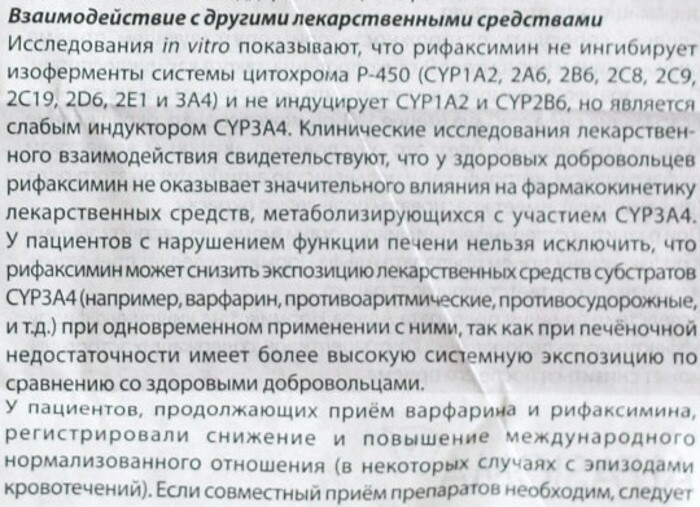However, with adequate timely treatment can be long-awaited pregnancy, so do not try to get rid of the disease by resorting to self-medication. This approach will only aggravate the disease process and delay the onset of the long-awaited moment of conception, and in particularly severe cases, and pregnancy can not occur.

What it is?
Hydrosalpinx (from the ancient Greek. ǔδωρ - «water" and σάλπιγξ - «pipe") - a one- or two-sided extension saccular fallopian tube filled with transparent serous non-infected fluid (transudate) formed on the background of inflammation due to soldering ampullar department masterbatch pipe.
The structure and the physiological function of the fallopian tube
It is also called the oviduct. It is hollow, with a width of 1 mm lumen, pair formation anatomical length of about 10-12 cm., Connecting the bottom of the uterus cavity with the pelvis. One hole oviduct opens into the uterine cavity. The distal end of its ends on the ovary and comprises a second opening, bordered fimbriae (fimbriae).
The walls of the Fallopian tubes consist of three layers - serosa, muscle and mucosal. Serosa covers outside oviduct, muscle - consists of two layers of multidirectional smooth muscle fibers that provide oviduct motility (reduction) in the direction from the ovaries to the uterus. The mucosa forms longitudinal folds and is a layer of cylindrical cells with ciliated epithelial villi. Located between epithelial cells glandular cells secreting mucus in the lumen of the tube. This mucus provides a constant internal environment of the tube, it contributes to the preservation of sperm activity, egg and embryo viability in the early stages of its formation.
In ovulation ovum captured fimbriae and further, as a result of vibrations and peristalsis villus ciliated epithelium moved into the uterine cavity. Mucus released by glandular cells, is also fed freely into the uterine cavity.
Thus, the physiological functions of the fallopian tubes are:
- Ovum capture by fimbriae when it emerges from the follicle into the abdominal cavity (ovulation).
- Ensuring move the egg and sperm of the delivery horn (angle) of the uterus to the egg.
- Providing sexual cell activity, their preparation, and to merge and create the conditions for fertilization.
- Moving the embryo into the uterus by means of peristalsis, and increased activity of the cilia epithelium.
- Ensuring the development of the embryo prior to implantation of a fertilized egg in the uterus.
The mechanism of disease development
Malfunctions of the fallopian tubes arise due to inflammation, such as background or salpingitis salpingoophoritis. As a result, it begins to grow and form connective tissue scars and adhesions. Inflammation and tissue adhesion oviducts capture all layers, with varying degrees of severity.
Die villi ciliated epithelium and muscle layer ceases to decrease (disappears peristalsis). In the lumen of the fallopian tube adhesions grow that violates its permeability, and the funnel tube fimbriae stick together. When adhesions close both openings of the oviduct, to form a closed space starts slime, hard, due to the inflammation produced by glands in the inner layer of the epithelium pipe. As a result, the tube expands, forming hydrosalpinx or saktosalpinks. When suppuration seromucous tube contents piosalpinks formed.
In some situations (incomplete soldering fimbriae) is formed "hydrosalpinx valve" which periodically breaks due to the pressure accumulated liquid. Pressurization takes place with a sharp change of body position, straining, in the process of hysterosalpingography. Thus transudate flows into a small basin. Emptying the oviduct when "gate-hydrosalpinx" occurs regularly. Izlivshayasya inflammatory liquid promotes the formation of adhesions in the pelvis - is generated vicious circle that supports the existence gidrosalpinksa.

Reasons gidrosalpinksa
hydrosalpinx formation occurs due to the closure of secondary (ampullar) department of the oviduct, it happens in response to a local infectious-inflammatory response. Infectious agents penetrate into the lumen of the fallopian tube as an uplink path, downstream from the organs of the reproductive system (Cervix, uterus, vagina) and descending path, namely through the bloodstream from the appendix, colon, tonsil, kidney, bladder bubble. Inflammation can be aseptic, occur in the presence of gynecologic diseases.
Gidrosalpinksa formed due to such reasons:
- carrying intrauterine contraception;
- diagnostic scraping the uterine cavity and abortion;
- frequent supercooling (activation of pathogenic microflora in the weakening immunity);
- oophoritis, ovarian tubes (Andechs, oophoritis, salpingitis);
- promiscuous and frequent change of partners (sexual infections: gonococci, trichomonas, ureaplasma, chlamydia);
- endometritis (inflammation of the uterus);
- myoma assembly disposed in the inlet region of the oviduct to the uterus;
- adenomyosis;
- oviducts damage during the laparoscopy with the occurrence of aseptic inflammations;
- sexual infantilism (crimped, long, thin tubes);
- external endometriosis (aseptic cause inflammation and adhesion formation in the pelvic area);
- inflammation of the cervix and cervical cancer;
- vaginal dysbiosis and long vaginitis.
Predisposing factors that increase the risk of hydrosalpinx:
- emotional stress, stress;
- disregard the rules of personal intimate hygiene;
- endocrine diseases: thyroid disease, diabetes (impaired ability of the body's defense).
It is worth noting that not always treated and transferred Andechs or salpingitis end appearance of hydrosalpinx. In the presence of a strong immune system, as well as adequate timely treatment of inflammation of the fallopian tube disappear without consequences.
Classification
Distinguish hydrosalpinx:
| right-handed | pathological process affects only the right fallopian tube. |
| sinistral | pathological process affects only the left fallopian tube. |
| Bilateral | affected both tubes. More often than not complete infertility (inability to get pregnant on their own) they develop in a form of pathology. |
| Plain | process one cavity bounded fallopian tube. |
| follicular | process in which the formed cavity formed by overgrowth adhesions, fallopian tube lumen dividing into several chambers. |
| ventilated | accumulated liquid within the pipe, due to its elasticity and the internal pressure breaks adhesions in the uterine cavity, and then outwardly through the vagina. |
symptoms
Very often, at the beginning of hydrosalpinx it runs completely asymptomatic. Women are mostly concerned about the symptoms of the primary disease, against which it originated. In the development of the disease is gradually starting to show signs that differ from the underlying pathology, whose intensity increases. They make the alert and run to the doctor to determine the cause of concern.
But often it happens that a woman for a long time trying not to pay attention to discomfort, writing off everything on PMS, physical overload, ovulation, and so on, thereby exacerbating state. What are the symptoms of disease?
- Nagging nagging pain in the lumbar region of varying intensity.
- Drawing pain in the abdomen, which occasionally subside and be resumed again (have the greatest intensity on the affected side).
- Menstrual irregularities.
- The rise in body temperature to subfebrile (not more than 37,5 ° C).
- Malaise (weakness, dizziness, etc.).
- The feeling of fullness in the abdomen, which is more intensive on the side of the affected pipe.
- Unsuccessful attempts to conceive a child.
- From the genital tract. When any kind of isolation is amplified gidrosalpinksa whiter (which is very characteristic of the presence of inflammation). Also, there may be periodic watery vaginal discharge (typical for the type of valve pathology), whereby all the symptoms temporarily subside before the next filling of the uterine tube liquid.
Diagnostics
Diagnosing the disease before us is carried out in several stages. Among them are the following:
- US. Ultrasonography detects between the ovaries and the uterus liquid formation.
- Gynecological examination. In this case it is possible to determine between the ovary and uterus-tight elastic formation ovoid or spherical shape, which is usually painless or maloboleznennym.
- Laparoscopy. As in a number of other diseases, this method is not only diagnostic but also therapeutic in nature.
- Hysterosalpingography. Character X-ray pattern may be similar nature tubal obstruction. In the case of brushless saktosalpinksom contrast agent filling tube defines its resemblance to the crimped "sausage."
possible complications
gidrosalpinksa complications may include:
- ectopic (tubal pregnancy);
- miscarriage;
- suppuration gidrosalpinksa (piosalpinks);
- adhesions in the pelvic cavity;
- infertility;
- in the case of IVF - the inefficiency of procedures, spontaneous abortion occurred pregnancy;
- rupture of the fallopian tube.

gidrosalpinksa treatment
Treat hydrosalpinx without an operation almost impossible. The treatment program includes two stages.
The first step is:
- determine the nature of structural defects in the affected pipe (one or both);
- identify the source of infection and determine the appropriate antimicrobial drug to remedy it.
- identify related infectious and inflammatory changes of the vagina, uterus and cervix;
- see how far spread the inflammatory process, if there is evidence of inflammation in the ovaries or pelvic cavity;
- dishormonal available to diagnose the disorder.
The complex of therapeutic measures in the first step gidrosalpinksa therapy includes antibacterial, anti-inflammatory therapy and physical therapy. In most cases, the first stage is a preparatory treatment, and after the operation is carried out to remove gidrosalpinksa laparoscopically.
Sometimes the patient about treatment hydrosalpinx try without surgery alone, using randomly selected antibacterial agents, or use the recipes of traditional medicine. This practice does not bring the proper use or leads to an imaginary recovery when symptoms the disease pass, but chronic process continues to progress, and can lead to rupture fallopian tube.
The next stage of the treatment involves not only removal gidrosalpinksa itself, but also to restore patency of the fallopian tube. With both tasks successfully copes laparoscopy.
Laparoscopic surgery to remove gidrosalpinksa is the most effective treatment of infertility, as well as It is the most reliable diagnostic method that allows the doctor to see the changes taking place in the natural a. Before the operation carefully inspect the area of the pipe, assess the degree of inflammation and the level of damage. Based on what he saw, the doctor will determine the further surgical approach.
As a rule, the essence of the operation is to remove the hydrosalpinx, adhesions dissection and restoration of the lumen of the fallopian tubes. If the pipe can not be restored, it must be removed.
What is the prognosis for pregnancy after laparoscopic surgery for this disease?
When the reduced cross tube and removing gidrosalpinksa conceive naturally and childbearing occurs in 60 - 75%, and the probability of occurrence of ectopic pregnancy than 5%. In case of removal efficiency IVF tube is 30 - 35%.

Do I have to abide by some restrictions for this disease?
Yes, definitely. Firstly, you should avoid physical exertion (vibration, straining, a sharp change in body position: tumbling, bending, jumping). Second, to avoid excessive activity during sexual intercourse, which increases the pain. Moreover, not recommend sunbathing and the solarium, as well as visiting saunas and receiving hot tubs, which can provoke the exacerbation of the inflammatory process.
It is undesirable to swim in the pool and open water as well as local hypothermia also provoke exacerbation. It is forbidden to drink alcohol, including alcoholic beverages, which suppresses the immune system.



